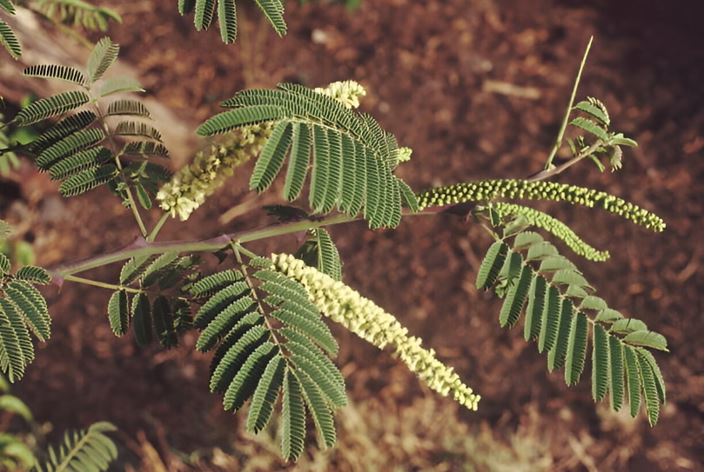Khadira (Senegalia Catechu): An Ayurvedic Tree with Great Potential
DOI:
https://doi.org/10.21760/jaims.10.9.27Keywords:
Senegalia catechu, Khair tree, Dravyaguna, Ayurveda, EBMAbstract
Plant based medicine, a cornerstone of traditional healthcare systems, has been utilized for millennia across various cultures to treat a wide spectrum of ailments. Traditional medicine heavily relies on the therapeutic properties of herbs and natural products derived from plants. According to an estimate made by the World Health Organisation (W.H.O.) 80% population of the world relies on traditional medicine and thus it forms the basis of primary healthcare. Primary reason for that being the inexpensive nature of herbal medicines as compared to modern pharmaceutics as these can be grown from seed or gathered from nature for little or no cost. Plants such as Khadira (Senegalia catechu), turmeric and Ashwagandha are some of the prime examples of natural remedies mentioned in Ayurveda classics that have been used for centuries. Khadira (Senegalia catechu) has been revered in Ayurveda for its wide range of therapeutic properties. Khadira commonly known as Kattha or Khair tree, has been extensively used in the management of skin disorders, gastrointestinal ailments and respiratory conditions. The most important bioactive compounds of this plant are flavanoids (catechin, (-) epicatechin, epigallocatechin, epicatechin gallate, epigallocatechin gallate, rocatechin, phloroglucinol, procatechuic acid, catecutannic acid, quercetin, quercitrin), alkaloids (kaempferol, dihydrokaempferol, taxifolin, afzelchin gum), glycosides (poriferasterol, poriferasterol acylglucosides), tannins (gallic acid, phlobatannins), sugars (d-galactose, d-rhamnose and larabinose). It has been shown to possess medicinal properties such as anti-bacterial, anticancer, anti-diarrhoeal, anti-inflammatory, antimicrobial, antioxidant, antipyretic, anti-ulcer, antisecretory, hepatoprotective, hypoglycaemic and useful in sore throat, wound healing and obesity. The present review study aims to comprehensively explore and provide reported detail information of this herb from various Samhitas and its study in modern area like its phytoconstituents, pharmacological activities and therapeutic applications. Focussing on the relevance of Khadira in integrative healthcare approaches, with insights into recent studies will highlight the plant’s promising role in drug development and public health.
Downloads
References
Sharma PV. Namrupajnanam: Characterization of medicinal plants based on etymological derivation of names and synonyms. Varanasi: Chaukhambha Visvabharati; p.159.
Borke CA, Stevens GR, Garriqan MJ. Locomotor effects in sheep of alkaloids identified in Australian Tribulus terrestris. Aust Vet J. 1992;69:163–5.
Sastri K. Charaka Samhita. Varanasi: Chaukhambha Bharti Academy; Reprint 2013.
Shastri A. Sushruta Samhita Sutra 38.12 (Ayurveda Tatva Sandipka). Varanasi: Chaukhambha Sanskrit Sansthan; 2009.
Pandey GS. Bhavaprakash Nighantu. Varanasi: Chaukhambha Bharti Academy; 2013.
Sharma PS, Sharma G. Dhanvantari Nighantu (Hindi translation). 2nd ed. Varanasi: Chaukhambha Orientalia; 1998.
Sharma PV. Kaidev Nighantu. 1st ed. Varanasi: Chowkhamba Orientalia; 1979.
Vaidya GI. Nighantu Adarsha. 1st ed. Varanasi: Chowkhamba Vidyabhavan; 1968.
Narahari P. Raj Nighantu. Tripathi I, editor. Varanasi: Krishna Das Academy; 1st ed.
Sharma PC, Yelme MB, Dennis TJ. Database on medicinal plants used in Ayurveda. Vol. 3. New Delhi: Central Council for Research in Ayurveda & Siddha; 2005.
Gupta A, editor. Astanga Hridaya of Vagbhatta. 13th ed. Varanasi: Chaukhambha Sanskrit Sansthan; 2000.
Sharma V, Sharma GP. Dhanvantari Nighantu. Varanasi: Chaukhambha Orientalia; 2008. p.121–2.
Chunekar KC. Bhavaprakash Nighantu. Varanasi: Chaukhambha Bharati Academy; Reprint 2018. p.518.
Pandey G. Madanpal Nighantu. Varanasi: Chaukhambha Orientalia; 2012. p.193.
Roy A, Geetha RV, Lakshmi T. In vitro evaluation of anti-mycotic activity of heartwood extract of Acacia catechu Willd. J Pharm Res. 2011;4(7):2010–11.
Gayathri DV, Lanitha J, Devi R, Sreekala, Prabhakaran VA. Pharmacognostical studies on Acacia catechu Willd and identification of antioxidant principles. Int J Pharm Pharm Sci. 2011;3(2):108–11.
Varkung V, Imoba TS, Joychandra SO, Babycha L, Aruna S. Protective effect of ethyl acetate extract of Acacia catechu in carbon tetrachloride-induced hepatotoxicity. Indian Med Gaz. 2012;:159–62.
Guleria S, Tiku A, Singh G, Vyas D, Bhardwaj A. Antioxidant activity and protective effect against plasmid DNA strand scission of leaf, bark, and heartwood extracts from Acacia catechu. J Food Sci. 2011;76(7):C959–64.
Seigler DS, Ebinger JE. Cyanogenic glycosides in ant-acacias of Mexico and Central America. Southwest Nat. 1987;32(4):499–503.
Narayana A. Khadira (Cutch tree) (Acacia catechu Linn.)—a medico-historical review. PubMed. PMID:11619395.
Naik GH, Priyadarshani KI, Satv JG, Banvalikar MM, Sohoni DP, Biyani MK. Comparative antioxidant activity of individual herbal components used in Ayurvedic medicine. Radiation Chemistry and Chemical Division, BARC, Trombay, Mumbai; 2002.
Noreen S, et al. Planta Med. 1998;64:United States.
Sharma PV. Dravyaguna Vijnana. Vol. 2. Reprint ed. Varanasi: Chaukhambha Academy; 2011. p.370.
Hashmat MA, Hussain R. A review on Acacia catechu Willd. Interdiscip J Contemp Res Bus. 2013;5(1):May.
Lakshmi T, Geetha RV, Roy A. In vitro evaluation of antibacterial activity of heartwood extract of Acacia catechu Willd. Int J Pharm Bio Sci. 2011;2(2):B188.
Kumar AS, Lakshmi T, Arun AV. In vitro antibacterial activity of Acacia catechu ethanolic leaf extract against selected acidogenic oral bacteria. Res J Pharm Technol. 2012;5(3):333–6.
Chaudhari SK, Tripathi S, Singh DP, et al. An overview on Acacia catechu. Int J Res Rev Pharm Appl Sci. 2012;2(2):342–6.
Tangeti S, Gabbita P, Ponnaluri RR, et al. Comparative study of the wound healing effect of topical Acacia catechu extract and silver sulfadiazine on excisional wound model in guinea pigs. Int J Basic Clin Pharmacol. 2018;7(12):2347–52.
Gayathri DV, Lanitha J, Devi R, Sreekala, Prabhakaran VA. Pharmacognostical studies on Acacia catechu Willd and identification of antioxidant principles. Int J Pharm Pharm Sci. 2011;3(2):108–11.
Acharya JT, editor. Charaka Samhita of Agnivesha, Sutra Sthana. Reprint ed. Varanasi: Chaukhambha Prakashan; 2011. Ch.30, Ver.15. p.162.
Sharma A, editor. Sushruta Samhita with Sushrutvimarshini Hindi commentary. Varanasi: Chaukhambha Surbharati Prakashan; Nidansthan, Ch.16, Ver.13. p.573.
Roy A, Geetha RV, Lakshmi T. In vitro evaluation of anti-mycotic activity of heartwood extract of Acacia catechu Willd. J Pharm Res. 2011;4(7):2010–11.
TG N, Sarang S, Jambhale D. Evaluation of anti-mycotic activity of Acacia catechu Willd (Mimosaceae). J Biopestic. 2008;1(2):197–8.
Satpudke S, Pansare T, Khandekar S. Review on Khadira (Cutch tree) with special reference to Prameha (Diabetes). Int J Herbal Med. 2020.
Altavilla D, Squadrito F, Bitto A, Polito F, Burnett B, Di Stefano V, Minutoli L. Flavocoxid blunts proinflammatory phenotype activation in endotoxin-stimulated macrophages. Br J Pharmacol. 2009;157(8):1410–8.
Burnett B, Jia Q, Zhao Y, Levy R. A medicinal extract of Scutellaria baicalensis and Acacia catechu acts as a dual inhibitor of COX and 5-LOX. J Med Food. 2007;10(3):442–51.
Jitender M, Chetan CS, Manu S. Human epithelial carcinoma cytotoxicity and inhibition of DMBA/TPA-induced squamous cell carcinoma in Balb/c mice by Acacia catechu Willd heartwood. J Pharm Pharmacol. 2011;63:1470–82.
Nadumane KV, Nair S. Evaluation of anticancer and cytotoxic potentials of Acacia catechu extracts in vitro. J Nat Pharm. 2011;2(4):190–5.
Ray D, Sharatchandra K, Thokchom I. Antipyretic, antidiarrhoeal, hypoglycaemic and hepatoprotective activities of ethyl acetate extract of Acacia catechu Willd in albino rats. Indian J Pharmacol. 2006;38(6):408–13.
Atmani D, Chaher N, Berboucha M, Debbache N, Boudaoud H. Flavonoids in human health: from structure to biological activity. Curr Nutr Food Sci. 2009;5(4):225–37.
Ismail S, Asad M. Immunomodulatory activity of Acacia catechu. Indian J Physiol Pharmacol. 2009;53(1).
Karwani G, Singhvi I, Gupta S, Kapadiya N, Sisodia SS. Antisecretory and antiulcer activity of Acacia catechu Willd against indomethacin plus pyloric ligation-induced gastric ulcers in rats. J Cell Tissue Res. 2011;11(1):2567–71.
Alam G, Singh MP, Singh A. Wound healing potential of some medicinal plants. Int J Pharm Sci Res. 2011;9(1):136–45.
Hashmat MA. A review on Acacia catechu Willd. Interdiscip J Contemp Res Bus. 2015;1:593–9.
Acacia and health. Available from: [Diet Health Club – Acacia Herb Profile](https://www.diethealthclub.com/herbs-andnatural-cures/acacia.html)
Joshi VMS. Ayurvediya Shabdhakosha. Mumbai: Rajya Sahitya Sanskriti Mandal; 1968. p.123.
Cooke T. Flora of the Presidency of Bombay. Vol II. Varanasi: Chaukhambha Bharati Publication; 1902. p.541.
Mohan S, Nandhakumar L. Role of various flavonoids: Hypothesis on novel approach to treat diabetes. Iran J Med Hypoth Ideas. 2014;8(1):1–6.
Cazarolli LH. Stimulatory effect of apigenin-6-C-β-L-fucopyranoside on insulin secretion and glycogen synthesis. Eur J Med Chem. 2009;44(11):4668–73.
Lu JM. Antidiabetic effect of total saponins from Polygonatum kingianum in streptozotocin-induced diabetic rats. J Ethnopharmacol. 2015;9(17):291–300.
Nazaruk J. The role of triterpenes in the management of diabetes mellitus and its complications. Phytochem Rev. 2015;14(4):675–90.
Ming-junchen. Phytochemicals for non-insulin diabetes mellitus: A minireview on plant-derived compounds with hypoglycemic activity. J Food Nutr Sci. 2017;5(2):23–7.
Mandloi A, Dash B. A clinical evaluation of Bakuchi Hartal Lepa and Amalaki Khadir Kashayam in the management of Switra (Vitiligo) – A pilot study. J Ayurveda Integr Med Sci. 2023;9:40–5.
Mishra VP, et al. Antimicrobial activities of Acacia catechu (Khadira) with respect to oral disease – A review. Int J Med Health Sci. 2020;6(2):15–24.
Meshram VS, et al. A review on Khadir (Acacia catechu) as best Rasayana (immune-modulator) for skin. World J Adv Health Res. 2020;6(8):65–8.
Lakshmi T, et al. In vitro antibacterial and pharmacological activity of Acacia catechu Willd. Int J Drug Dev Res. 2011;3:328–34.
Twig with flowers – Acacia catechu (Mimosaceae). Available from: [iStock Acacia Catechu Image](https://www.istockphoto.com/photo/twig-with-flowers-acacia-catechu-family)

Published
How to Cite
Issue
Section
License
Copyright (c) 2025 Navya, Sumit Raina

This work is licensed under a Creative Commons Attribution 4.0 International License.














